Types of Goldendoodle Guide [F1, F1b, F2 with photos]
Thinking of getting a Goldendoodle?
Great choice. Doodles are adorable dogs with amazing dog qualities – affectionate, playful, friendly, kid-friendly, and intelligent. But what types of Goldendoodle are you considering?
With different types of doodles, each with its characteristics and referred to with a unique set of terminologies, it can be challenging to choose one. Mind you, understanding the different types of Goldendoodles is necessary to determine the most suitable type for your family.
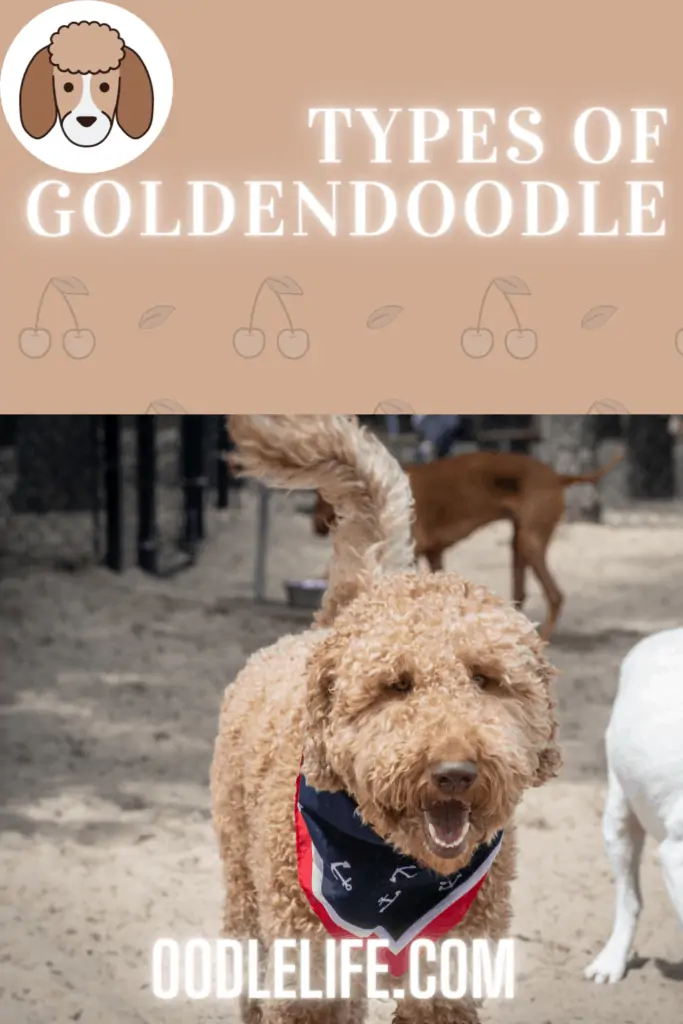
We understand your dilemma and want to make it easier for you. Here’s a guide to the different types of Goldendoodles.
What is a Goldendoodle?
A Goldendoodle is a hybrid (doodle dog) derived from crossbreeding a Poodle and a Golden Retriever, creating the best of the two breeds. You get the Poodle’s intelligence and coat that doesn’t shed and the Golden Retriever’s mild-tempered personality.
They can also be produced from backcrossing, but we’ll get to that later.
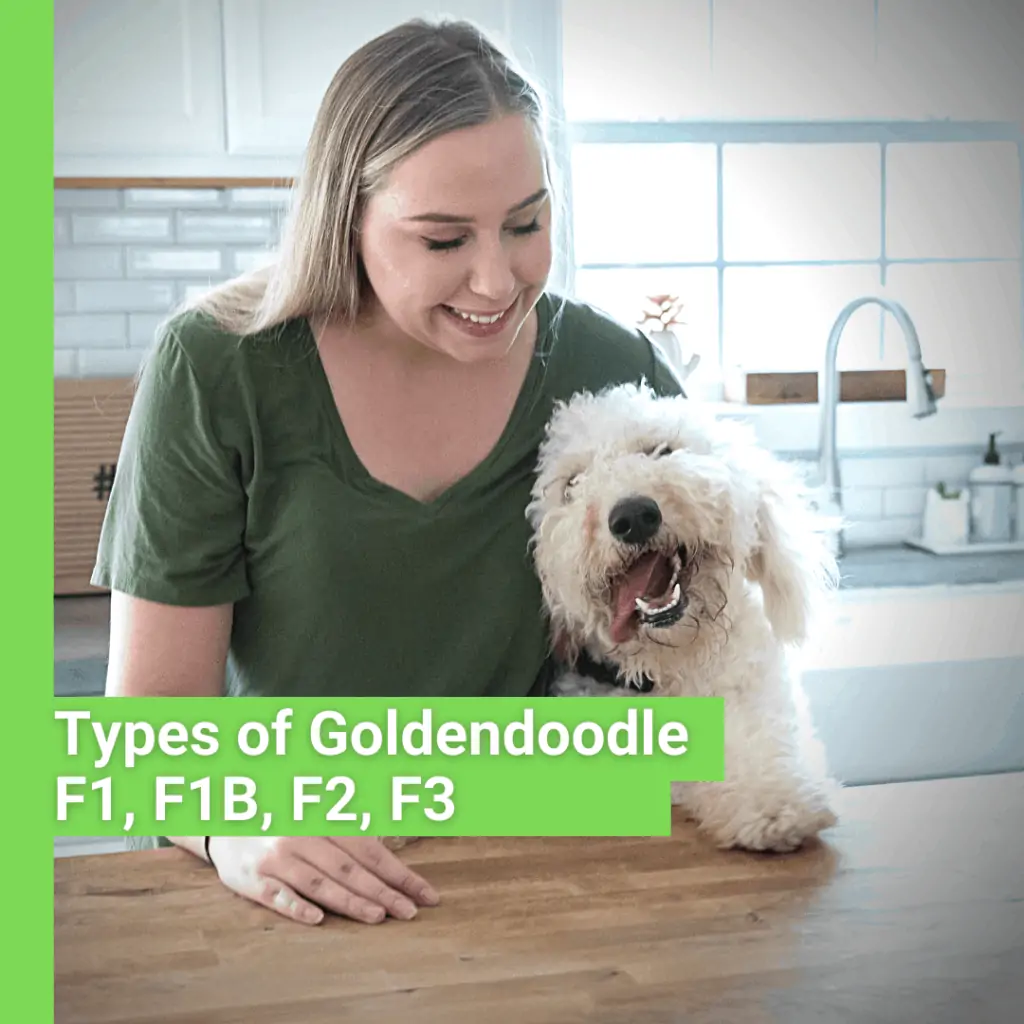
Goldendoodle Generations
Because different dog breeds and percentages are involved in producing doodles, there are several variations of the Goldendoodle, each classified by generation.
But why so many different generations?
You see, starting with two purebred parents, you’ll get a first-generation Goldendoodle if you breed the two. And although 50% golden retriever and 50% poodle, this doodle will have significant variations because the parent breeds pass on different traits. It’s the reason breeders are often unable to predict a doodle’s genetics accurately.
Below is a breakdown of the different Goldendoodle generations:
1. F1 Generation Goldendoodles
First-generation doodles, identified as F1, are a direct crossbreed of a pure poodle and a pure golden retriever, resulting in 50% poodle and 50% golden retriever.
These are the traditional or most common of doodles and have several of the traits generally attributed to the Goldendoodle.
And as and as first-generation hybrids, they have hybrid vigor. Their biological functions are highly improved due to the genetic variation in their makeup, meaning they’re physically and mentally healthier than the parent breeds.
F1 Goldendoodle characteristics include:
- Allergy potential: They have limited hypoallergenic qualities. Therefore, it is not advisable for people with moderate to severe allergies to have this type of Goldendoodles. However, if you have no or mild allergies, you can have a first-generation golden retriever.
- Coat: They have a naturally-growing coat 3 to 5 inches long that requires weekly grooming as well as combing. The coat can be wavy or curly, and for easier maintenance, it’s advisable to cut the fur every couple of months.
- Shedding: Most F1s are heavy to light shedders.
- Grooming: The F1-Goldendoodles grooming requirements range from moderate to high.
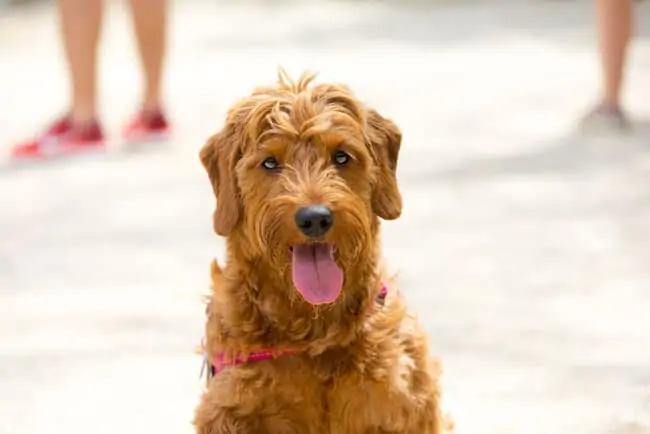
2. F1B Goldendoodle Generation
The First Generation Backcross (aka F1B Goldendoodle) is a breed of an F1 and a purebred poodle or golden retriever.
As a cross of a hybrid, genetically, it means that the resulting crossbreed is still a first-generation. Therefore, they too have hybrid vigor and adorable personality of the F1.
However, in this type of Goldendoodle, either the Poodle or the Retriever traits can be intensified.
F1B Goldendoodle characteristics include:
- Allergy potential: The F1B generation is the most hypoallergenic of Goldendoodle types, making it the best fit for people with severe allergies.
- Coat: Its fur appearance relies heavily on the traits its F1 parent passes on. The coat length ranges between 3 to 5 inches or longer and can be curly, wavy, or straight. You’ll also see more color variations with this generation.
- Shedding: 50% of F1b are shedding varieties, while 50% of these puppies are non-shedding. However, 99% of the time, they’re non-shedding, making this generation a popular choice.
- Grooming: They require moderate to high grooming.
3. F2 Goldendoodle
F2 Goldendoodles are second-generation, meaning both parents are F1s.
Because they’re the same percentage of Poodle and golden retriever, their qualities are somewhat similar to those of the F1 doodles.
Many reputable breeders frown upon this combination because of the unpredictability of their shedding patterns and the fact that it often results in shedders.
Characteristics of F2 Goldendoodles include:
- Allergy potential: People with moderate to severe allergies should avoid this type of doodle as most of them shed their fur unless you have carried out genetic testing and determined they are non-shedders.
- Coat: It can be either curly, wavy, or straight.
- Shedding: 25% are full-shedders, 50% are low to heavy shedders, while 25% are non-shedders.
- Grooming: Their grooming needs vary significantly depending on the genetic mix that they inherit.
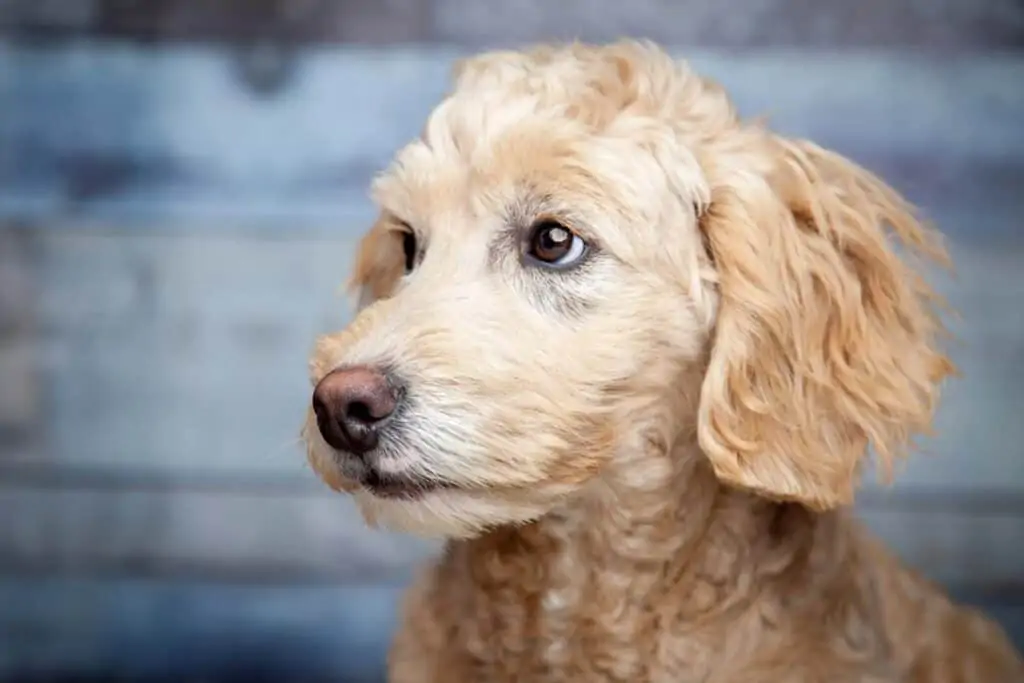
4. F2B Goldendoodle Generation
This type is a mix of generations F1 and F1B Goldendoodles. Alternatively, it can be a cross between two F2 doodles, resulting in an F2B that’s 75% poodle and 25% golden retriever.
F2B doodles are also known as multigenerational because they’re third generation offspring.
While less common, the F2B is a solid generation. You’ll find the personality traits that make Goldendoodles adorable, such as good health and non-shedding quality.
The Poodle genes are more dominant in this generation; hence their coats are mostly wavy or curly.
F2B Goldendoodle characteristics include:
- Allergy potential: Because of the poodle-like wavy curly fur, it’s more hypoallergenic and suitable for homes with people with moderate allergies. However, there’s always the exception to genetic rules, as with most hybrids, so if you’re allergic, it’s best to conduct a test to ensure you pick the type that does not shed.
- Coat: The coat is curly, wavy, or straight.
- Shedding: Depending on the coat gene it acquires from its F1B parent, it can be anywhere from a low shedding (0-25%), heavy shedding (50%), or non-shedding (25-50%). Curly coat dogs shed the least, and straight coat the most.
- Grooming: This breed has moderate to high grooming requirements.
There are markers and ways you can attempt to predict what type of coat a Goldendoodle puppy will end up having.
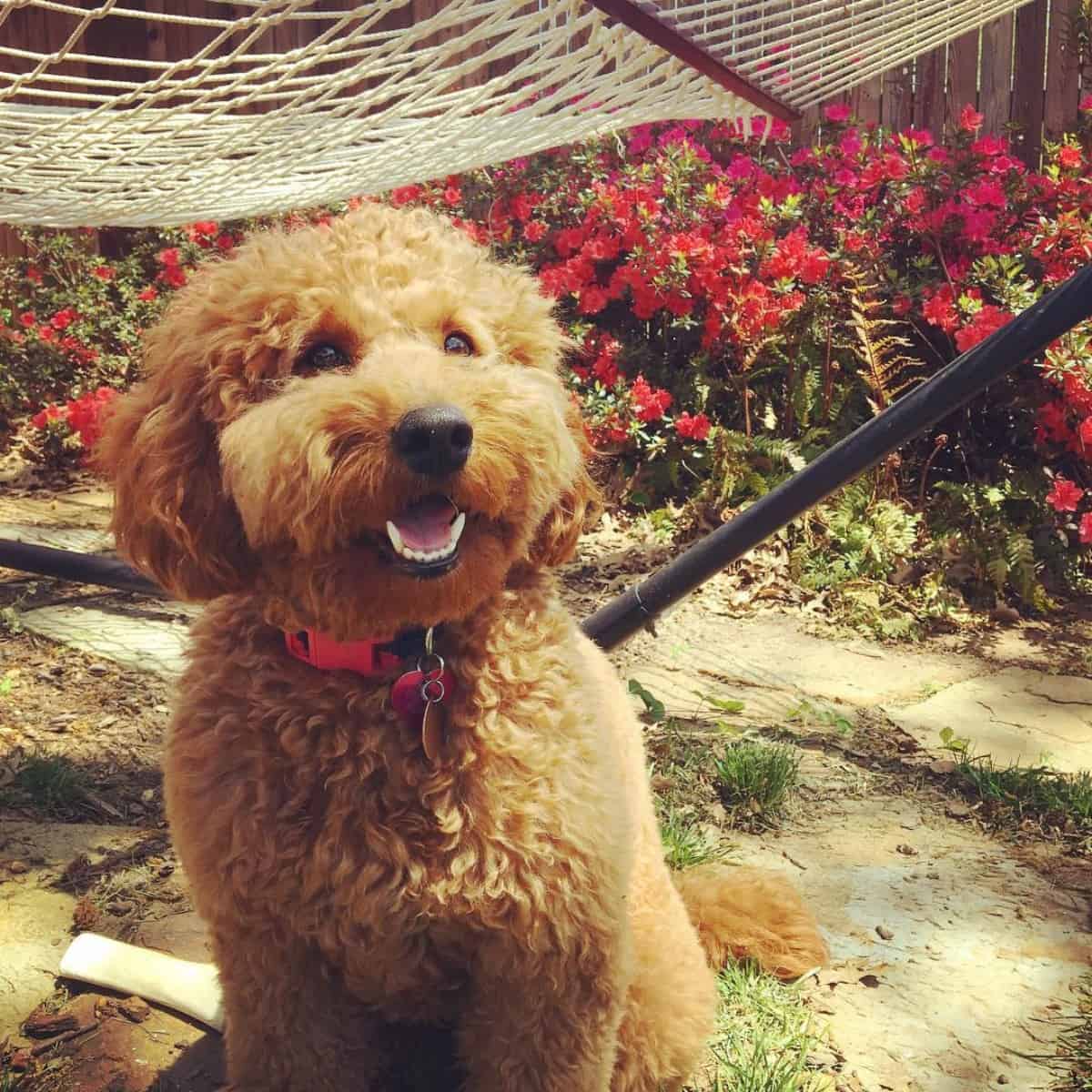
Goldendoodle Sizes
Goldendoodles come in three sizes:
1. Standard Goldendoodles
The standard-sized Goldendoodles are the largest variety.
When fully grown, standard-sized doodles are about 22 inches or taller when measured from the ground to their shoulder.
The males weigh about 55-70 pounds, while females 50-60 pounds.
Slightly smaller Goldendoodles are sometimes referred to as a “medium Goldendoodle”.
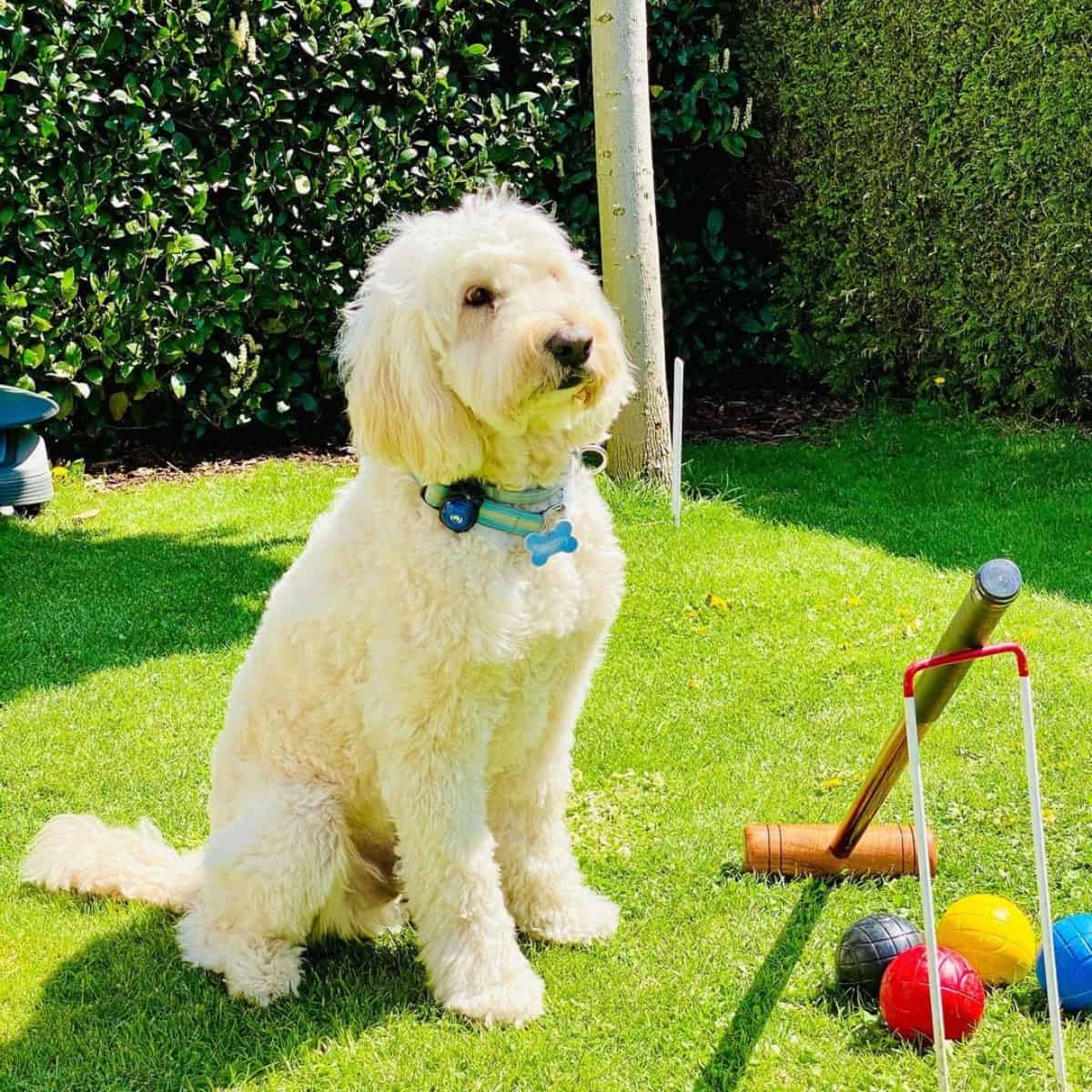
2. Miniature Goldendoodles
The miniature Goldendoodle, when fully grown, stands at about 16 to 20 inches high when measured from the floor to the shoulder.
They weigh 35 to 50 pounds on average, and both females and males weigh the same.
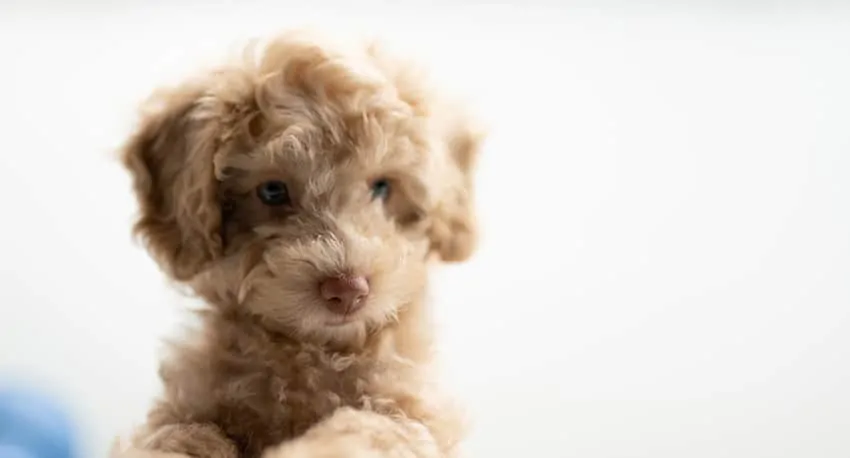
3. Toy/Petite Goldendoodles
These are the smallest variety of Goldendoodles, with some being smaller than some cats.
Both males and females have an average weight that ranges between 20 to 35 pounds, and they’re about 15 inches tall.
Learn more about Teacup and Toy Goldendoodle
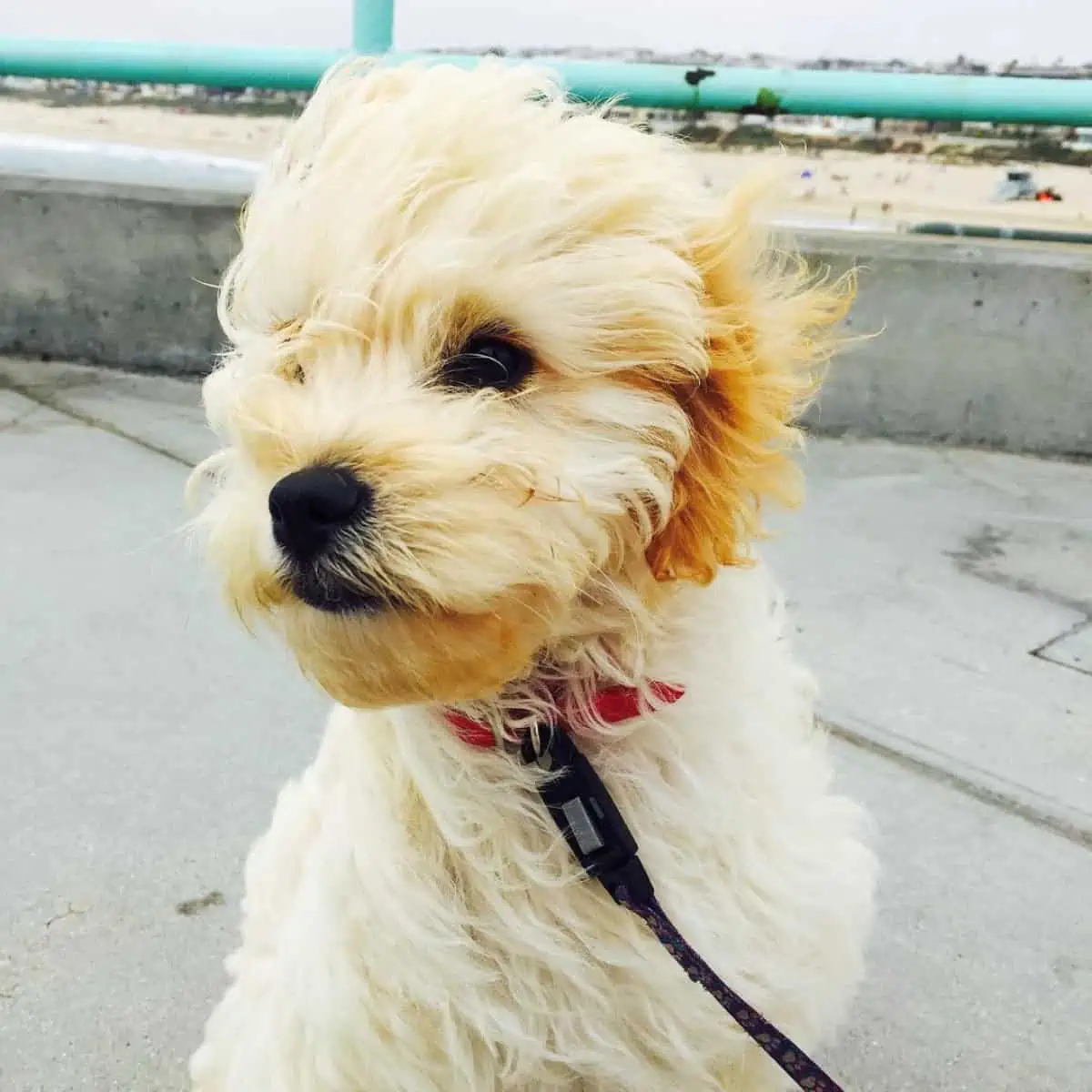
English Goldendoodle Size
Another variation that is with considering the the English Goldendoodle. They are often stockier and more broadset than a American or Canadian Goldendoodle. They inherit this from the purebred dog breed – the English Golden Retriever.
We go in depth into the differences between and English Godlendoodle and a regular Goldendoodle in this article. (One looks HEAPS more like a teddy bear)
The English Goldendoodle is also the most common type in Australia – which helps explain some of the body type variations you will see in photos online. Down under we also refer to Goldendoodle as “Groodles” – check out the #groodle on Instragram to see some English Goldendoodle style Aussie dogs.
What size Goldendoodle should you pick?
What size dog should I get? This is a question that many future Goldendoodle puppy parents consider when they are looking at their options. There are many factors to take into consideration, and it can be difficult to know where to start.
The size of the dog will depend on your living situation as well as your other pets in the household. For example, if you live in an apartment or condo with small children then you may want a smaller breed that won’t knock them over accidentally or step on them by accident!
Reasons you might go with a smaller sized dog include :
- Smaller sized apartments and condos (or limited outdoor area space)
- Small children in your home that may be knocked over or stepped on by a larger sized Goldendoodle
- Difficulty in fitting the larger dog into your vehicle
- A slightly lower food budget than larger Goldendoodles
With that said, smaller breeds are
- Just as prone to injury or genetic illness
- Still require exercise and mental stimulation
- Can be more expensive than medium or standard size Goldendoodles
Goldendoodle Colors
Goldendoodles are bred in many colors, and so these furry friends come in all sorts of interesting colors.
And with the advancements of DNA tests, breeders create just about any color coat, and they’re getting fancier with the coats produced over time.
Below are the different Goldendoodle colors:
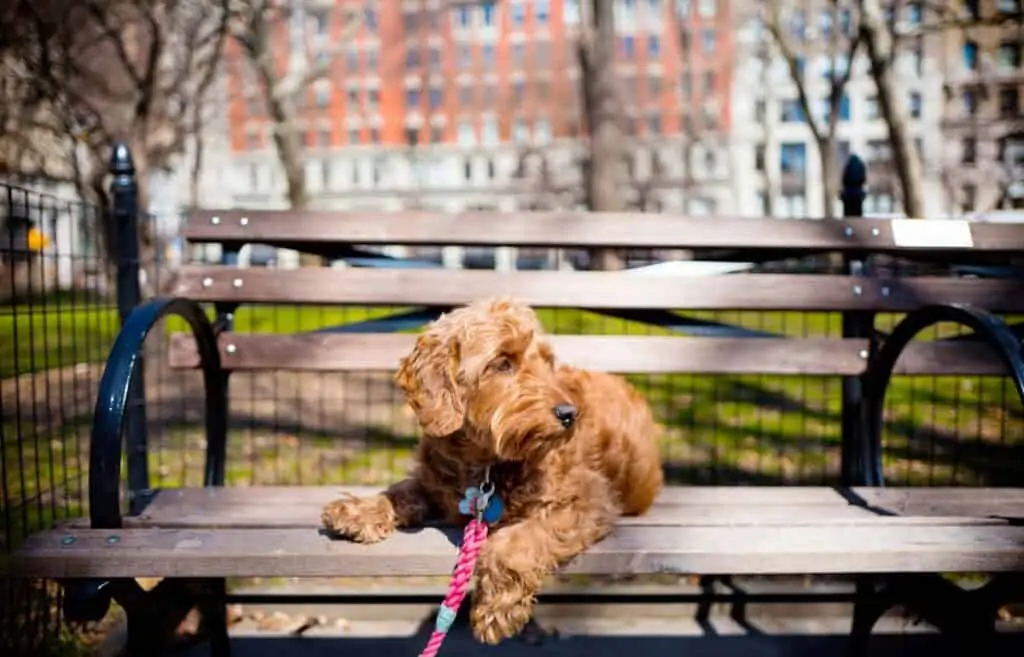
1. Apricot
Apricot-colored Goldendoodles are one of the most desired Goldendoodle color coats – because of their teddy bear appearance. And what makes them even cuter is their black eye rims, toenails, and nose.
Over time, however, their color tends to lighten, and they may easily be mistaken for cream or tan doodles.
An interesting tidbit about this doodle color is that it’s suspected to have come about due to a unique combination of brown, blue, and silver genes.
2. Brown
This brown is the most common Goldendoodle puppy color. And by brown, we mean deep mahogany to dark walnut color.
Mind you, the “café-au-lait” is another official poodle color that looks a lot like brown; therefore, you’re likely to run into many brownish-colored poodles.
The brown coloring is due to the Poodle’s dominant gene. So if there are any Poodle parents with Brown coat genes inthier history, you may see a multigen Goldendoodle with this coat color.
3. Cream
Often, people get Labradoodle or white Goldendoodles confused with cream Goldendoodles because of the light coat.
Breeders commonly use this cream color for breeding multi-color coat doodles, as is visible when you observe the Phantom, Mele, and Parti poodles.
The physical features of cream doods vary widely. Some have lighter toenails, lighter colored eyes, and light brown noses, while others have pinkish skin (be careful of dog sunburn).
Cream-colored Goldendoodles have the largest physical attributes variations, making it highly unlikely to see two cream poodles with similar physical attributes.
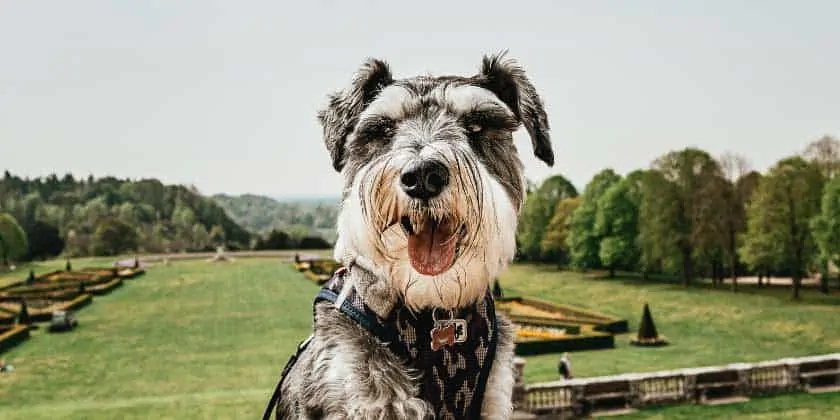
4. Red
The Red Goldendoodle is another widely sought-after coat color because it’s so cute, resembling a little teddy bear. It’s a red mahogany color and the brightest among all the different doodle colors.
A Red doodle is created by breeding a standard color Golden Retriever with a darker colored Poodle. It is difficult to get this precise coat color without drifting towards Apricot or Golden.
5. Black Goldendoodle
Black Goldendoodles are among the unique and rarer varieties. They’re all-black, including their eyes, paws, pads, nose, and other physical features.
Black doodles are a result of a recessive gene’s genetic diversity in the Poodle or Golden Retriever.
To produce a black doodle, both the Poodle and the Golden Retriever must have this recessive gene. For this reason, you’ll rarely find this color among these doodles.
6. Sable Coat Goldendoodle
The Sable is another unique doodle color with an interesting story behind it.
It’s hard to believe, but they’re not born with their black and white coat color. Sables are born dark brown or solid black, but as they get older, the puppy coat grows out, and the dark colors fade out.
Eventually, when the sable doodle matures, its coat is tan or lighter cream with black tips. And, interestingly, the black tips don’t fade.
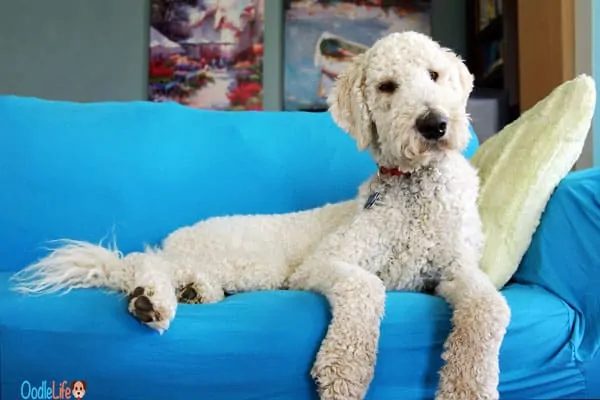
7. Parti
Parti Goldendoodles have two colors, half white and the other half another color. And often the second color is either tan or apricot.
The doodle’s colors result from recessive or passive genes overruling the single color coat, creating multiple colors. It’s also common to find multi-generation doodles with more poodle genetics.
Recessive genes being non-dominant are rare. HOwever, they play a primary role in producint Parti doodles. You need to breed these rare passive genes with other passive genes.
However, what often happens is, a dominant gene will override the parti doodle’s color, potentially masking the recessive genes. Hence extensive DNA tests are required to predict a Parti doodle’s color. And because of this rarity, usually no two parti doodles look alike.
8. Black and White
Black and white Goldendoodles are characterised by a white chest, white nose, and white stripe on the top of their head.
Some of these doodles are referred to as Tuxedo Goldendoodles. What sets the Tuxedo doodle and black and white doodle apart is the black color extending down the whole back area, white hind legs, a white belly, and a white bib,
To produce a black and white doodle, you need to breed a Parti doodle with a Golden Retriever, hoping the genes are passed down. It’s why these doodles are extremely rare.
9. Phantom Goldendoodle Coat
Phantom Goldendoodles are extremely rare, but this doesn’t mean they differ from other doodles. Their temperament and other traits are just like other doodles.
Like the Parti doodles, Phantoms have two different colors. However, for the Partis, their colors are in particular locations, similar to a Yorkie’s or Manchester terrier.
Phantom doodles have one color covering most of their body and a secondary color on the legs’ lower parts, the muzzle, and the eyes.
They’re often black and tan, but you can also find black, silver, and red mixes. And like the Parti doodles, it’s uncommon for two phantom doodles to look alike.
It’s easy to predict if your dog will be a phantom because of the markings on them when they’re born. What that means is, doodles don’t develop the Phantom colorings but are born with their coat that way.
11. Tan
These Goldendoodles are, most of the time, a mixture of Cream and Apricot doodles.
Their fur has shades of lighter apricot and white, attributes they inherit from their Golden Retriever parent.
12. Grey Goldendoodle
Grey Goldendoodles are often born dark black, but by the time they’re two, this hair clears, and they change color. From then on, they’re no longer black-colored and typically look like rustic silver. If the coat ends up staggered some people consider them to be almost a Merle Goldendoodle.
We wrote a complete guide to picking the best name for your Gray dog.
Wrap Up
Now you know more about Goldendoodles, including what exactly they are, the different types, sizes, and colors. We hope you find this information valuable in helping you settle on a doodle most suited for your family. But whichever of these doodle types you choose, we can assure you that you’ll love them. The Goldendoodle makes a lovable friend with great qualities.